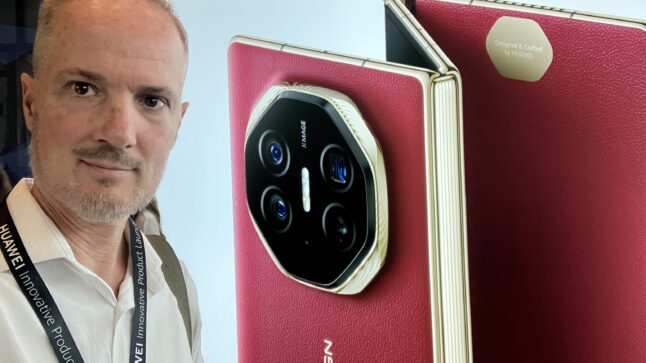In Part 1, I went through the new Huawei Mate XT (the trifold smartphone). And how to think about innovation.
My point was that it’s not just that the trifold is cool. It’s that other companies can’t build it.
Apple can’t do it. Neither can Xiaomi, Oppo, Vivo or the others. At least not yet.
For the trifold, management actually laid out the 4 breakthrough innovations that were required to build it. And the biggest one was the hinges that enable it to fold.
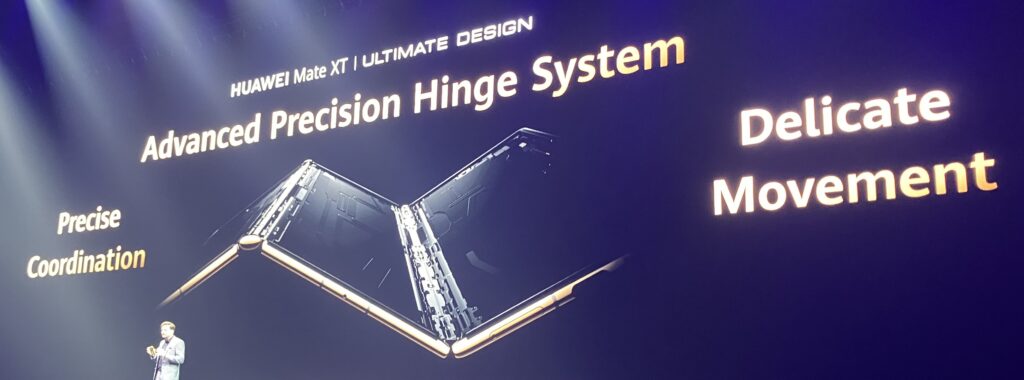
This was interesting. To make one big screen, you need a hinge that opens inward and another that opens outward. You need to build both into one screen. They need to be durable, as you open them thousands of times. And the screen needs to remain seamless and bright. And, of course, they need to be light weight and really thin.
Huawei laid out how they build these hinges, which was super interesting.
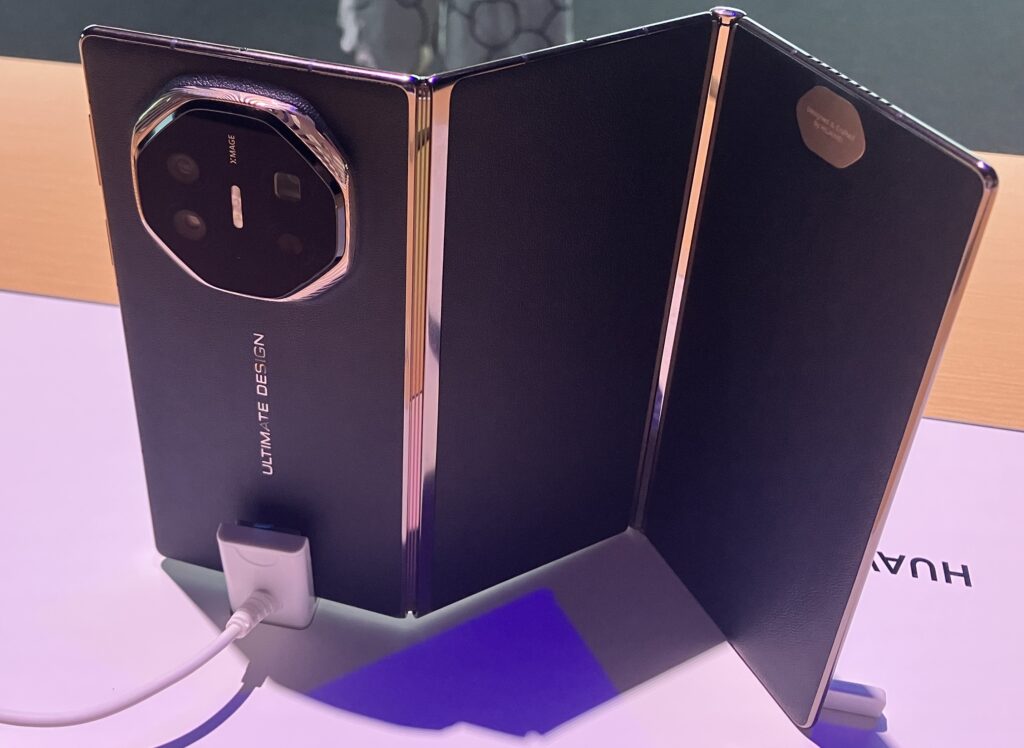
The second innovation was the screen. It bends and folds. Repeatedly. And without losing quality or getting distortions.
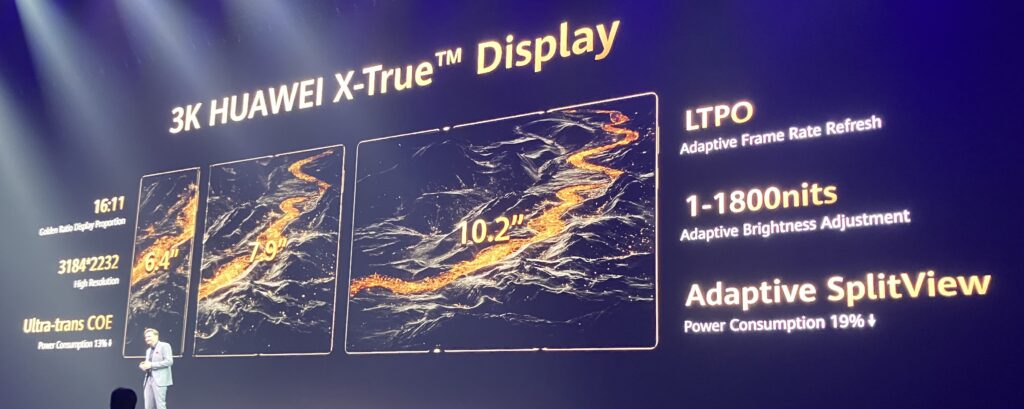
The batteries were another innovation. This is basically three smartphone screens stitched together. And they require three different batteries. Making them light weight and thin is really important. The trifold has three 1.9mm thick batteries. Really, really thin.
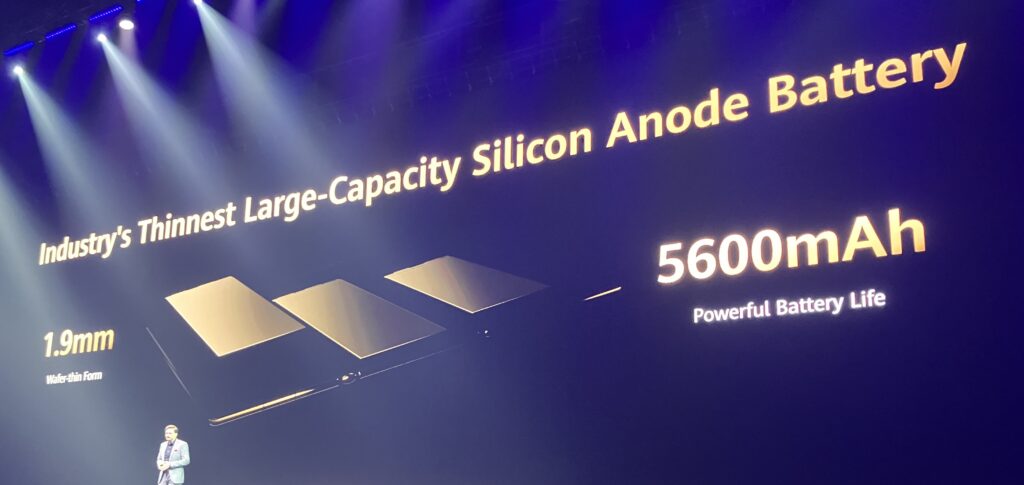
And there is charging. A big screen takes more electricity. So charging fast matters. Which it does, with wires and wirelessly.
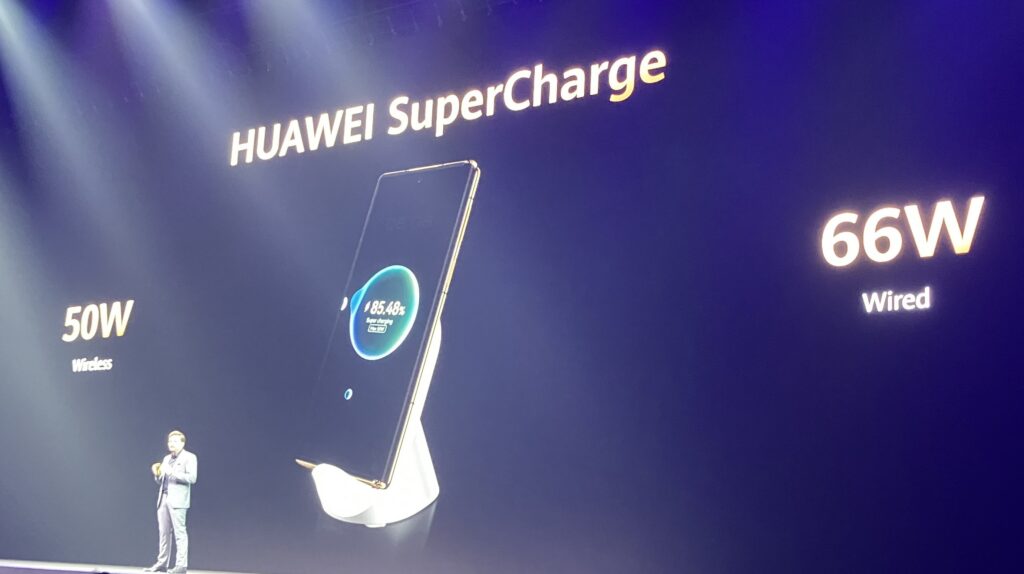
The initial price for the trifold is $3,500, which is pretty crazy. But this should come down pretty fast.
The Other New Huawei Products Also Leverage Engineering Innovations
I haven’t mentioned the other 3 products that were released. I’ll go through them quickly as they are neat but not my main point.
Basically, it’s the same playbook. Use breakthrough, not incremental, engineering innovations to offer things that others can’t match. So you need to use hardware target product types or situations that are extreme.
The MatePad Pro 13.2 is a Smart Tablet Going for PC-Level Capabilities
I played with their new tablet, which is aiming to be a lite version of a PC.
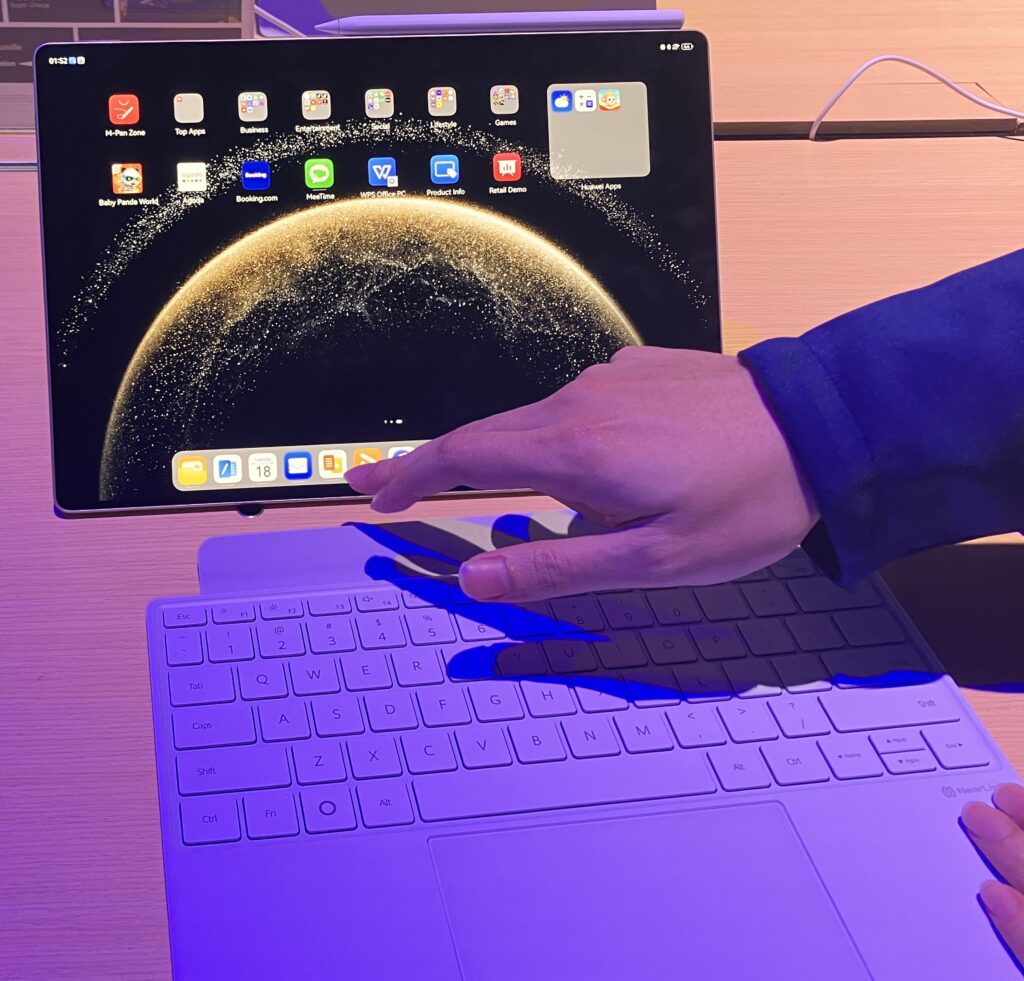
Pretty good. It has a 13-inch screen, 512GB memory, and 12GB RAM.
And it has a detachable keyboard.
And it offers a scaled down version of Office, that is compatible with Microsoft Office. Interestingly, it runs HarmonyOS.
Fine. Not stunning but kind of cool.
What got my attention was the technology for the screen and stylus, which is the engineering they talk most about.
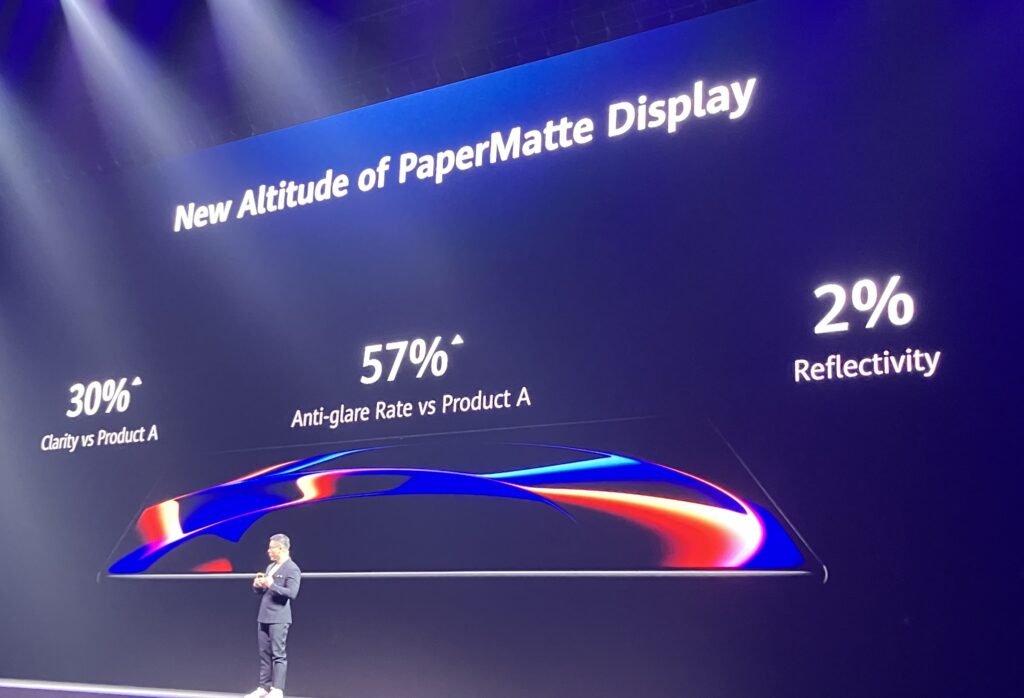
This is clearly a big focus. They have a “PaperMatte” display that is really easy to write on with their stylus. It also has no glare or reflection but it is the interaction of the stylus and the display that is strange. It feels like writing on paper.
The other big engineering focus here is how thin and light the tablet is.
The initial price for this MatePad Pro is $1,100.
Huawei Band 10 is The New Smartwatch. But I Like the Huawei Watch Ultimate.
They talked about their new Band 10 smart watch. Fine.
But the Huawei Watch Ultimate (they really like to use the word ultimate) is super cool. This is their smart watch that can be used for golfing, trekking, diving, and lots of other stuff.
Here’s the golfing function.
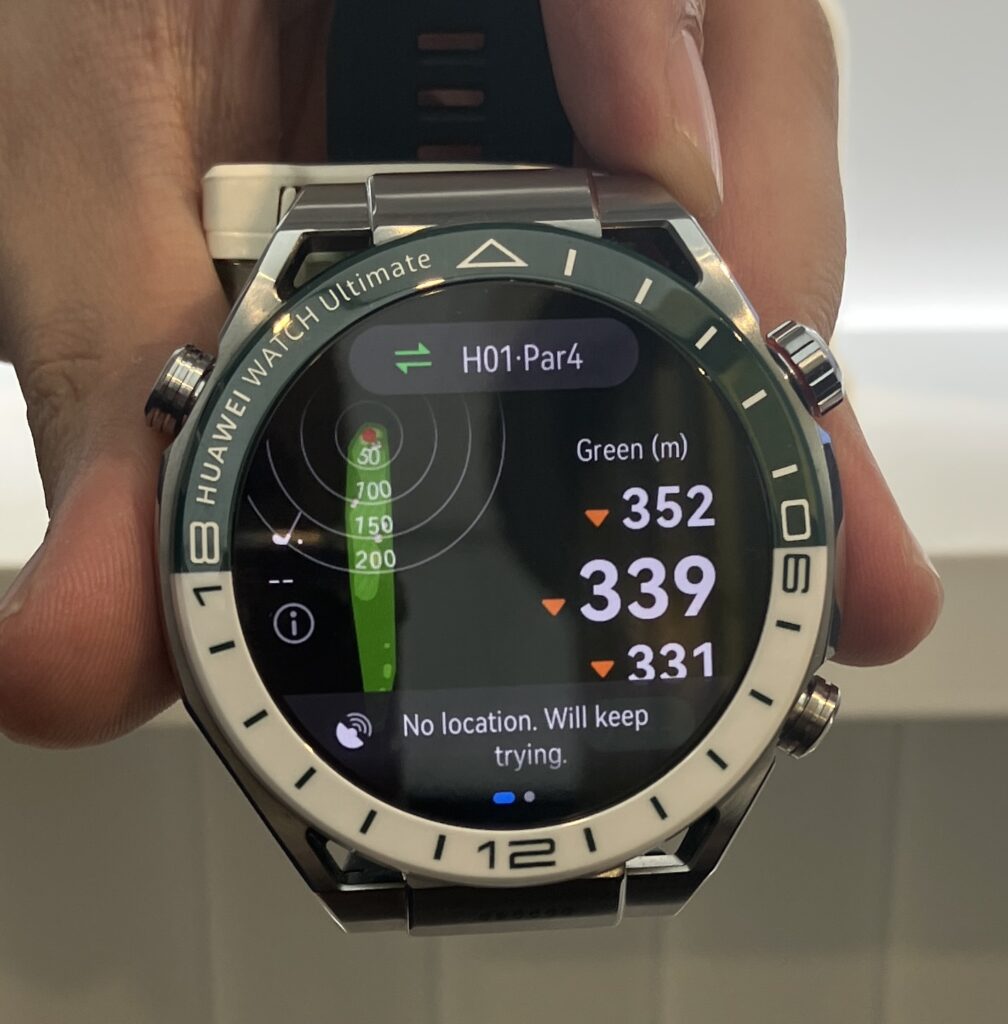

For each course, it shows distance to bunker. And to green. It can recommend a club. It can tell you the slope direction. And wind direction.
The diving function is even cooler (I dive. I don’t golf). You can wear it up to 100 meters underwater. It tells you oxygen time. It tells you when to ascend. And so on.
The hiking and trekking functions are also cool. You can use it in the jungle. It shows the routes. It stays in communication.
And it has the health stuff. Including a blood pressure cuff in the band, which I use all the time.
You can see the innovation playing out here. They are targeting more extreme situations (underwater, in the jungle, blood pressure monitoring) that require hardware breakthroughs. And that other smartphone makers cannot do.
Check out the Huawei watches sometime. They are really fantastic.
I also think paying by your watch is pretty cool. I am going to start doing this.
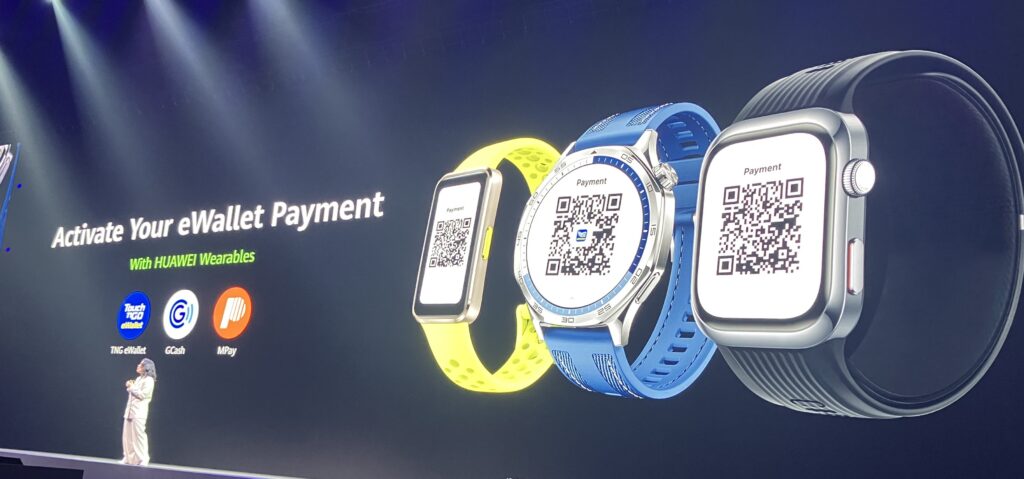
Huawei FreeArc: Open-Ear Earbuds
Ok. We’re out of the big engineering stuff and are now into simpler earbuds.
A problem with earbuds is they go inside your ear. Which can be uncomfortable over time.
So, Huawei’s Open-Ear Earbuds sit outside the ear canal. They sort of hang over it. And, sure enough, they are super comfortable. You can’t even really feel they are there.
Plus, they are light. About the same as wearing glasses or earrings.
Plus, they have a soft ring that keeps them on. Even when running. Or exercising. They don’t fall out like other earbuds. I’ve broken quite a few this way and I always wondered if they design them to fall out on purpose.
The price is around $120. So not bad at all.
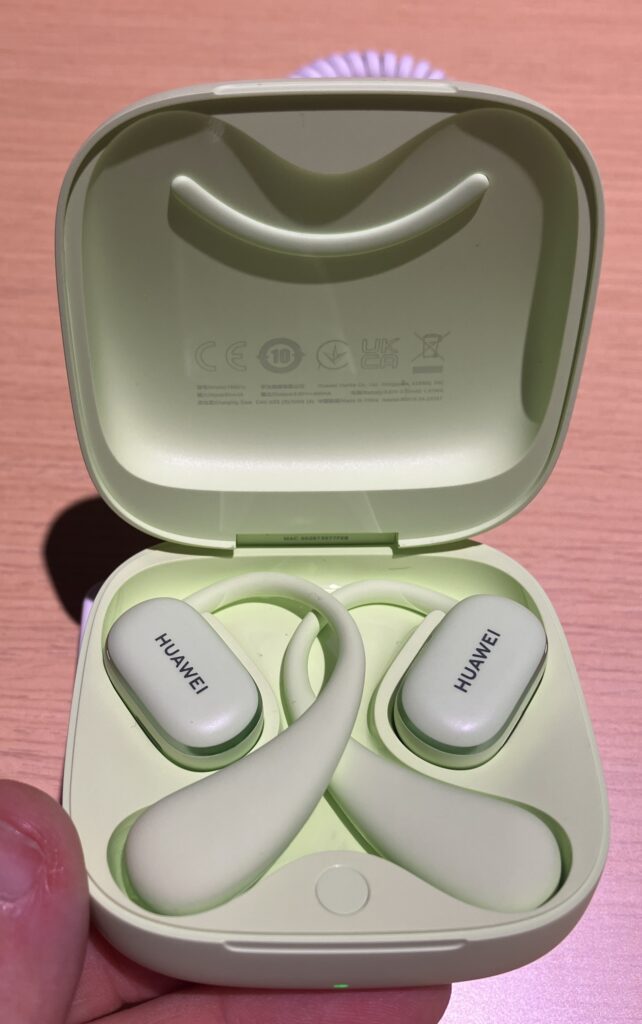
Final Questions: What is Huawei’s Innovation Strategy? And Why Can’t Apple Innovate?
I’ve written 7 books on digital strategy. Really about digital competition. And if I were to boil it down to two things, they would be:
- Increase your rate of innovation (or in another digital marathon). I have outlined 5 digital marathons you can run (SMILE). But innovation is a big one, especially when it directly translates to value to the customer.
- Build a Moat
That’s why the books are called Moats and Marathons.
I call the simpler version of this the Extreme Personalization and Customer Improvements Playbook.

You’ll notice that the first 3 levels are about increasing the value to customers by personalization and other methods (basically marathons). And the fourth is about strengthening your moat. So it’s the same approach.
This is actually a problem for Huawei’s Devices Group. Because, as mentioned, there really aren’t many moats available in consumer products. The only ones available are:
- Build an ecosystem / innovation platform. Like iOS for Apple.
- Build in switching costs for services (think iCloud, iMessenger).
- Use economies of scale in Marketing and R&D spend.
Apple has all three of these. Huawei DBG only has the last one. So, DBG is in a much more difficult position in smartphones in particular.
So, what does it do?
- It leans heavily into the Marathon. It focuses on being a faster and more aggressive innovator.
- It leverages its other businesses. Particularly its hardware expertise in its telecommunications equipment business and its software expertise in its cloud business.
- It is trying to get adoption of its own operating system HarmonyOS. That would give it a real big moat. And they are getting really close to this right now.
So, Huawei is great at innovation partly because it has to be.
And Apple sucks at innovation partly because it can get away with it.
Apple has such a strong moat, it can push out the same iPhone year after year and people buy it.
We see this pattern all the time. Businesses with big moats tend to get lazy. Businesses without moats (and start-ups) tend to be lean and mean.
But there are a couple of other big things happening here.
- The Huawei strategy becomes much more powerful when a change in technology is happening. The emergence of EV technology created an opening for aggressive start-ups to steal business from legacy automakers. LLMs enabled OpenAI to jump into search against Google. Rapid innovation can be really effective if a new technology is emerging and the existing moat doesn’t offer much protection. This could be happening smartphones. GenAI is getting embedded into smartphones and changing how we use them. Operating systems may become much less important and powerful.
- Government regulations can alter the competitive dynamic. And it can be positive and negative. The US government has really hit Huawei hard. Especially in consumer products (which was not their concern). But, if anything, it made Huawei more aggressive and innovative. We’ll see how this evolves.
- Consumer behavior and preferences can change. TikTok broke into the US by going after teens who hadn’t adopted Facebook yet, and didn’t want to. Changing consumer preferences and behavior can change the competitive dynamic. We might be at a point where consumers are so sick of Apple’s stagnant iPhones that they are willing and maybe eager for an alternative. You hear a lot of grumbling about this.
I think we will get an interesting answer to these questions in China and Asia. Apple is mostly just a handset maker in China. Nobody uses their software. It’s all WeChat, Baidu, etc. And their market share is falling.
What happens in Southeast Asia will be really interesting. We can predict Apple vs. Huawei in the US and in China. But what happens in international markets is key.
I thought it was interesting that Huawei was launching their Trifold in Malaysia. They are clearly betting on expanding in Southeast Asia in smartphones. An area they had pulled back from a few years ago when they couldn’t get their chips or Google Play Store. Now they are back and marketing aggressively. I’m watching SE Asia, Europe and Latin America closely.
***
Ok. That’s it. It’s a fun topic. Thanks for reading.
Here’s the Huawei pop-up store in Kuala Lumpur.
Cheers, Jeff

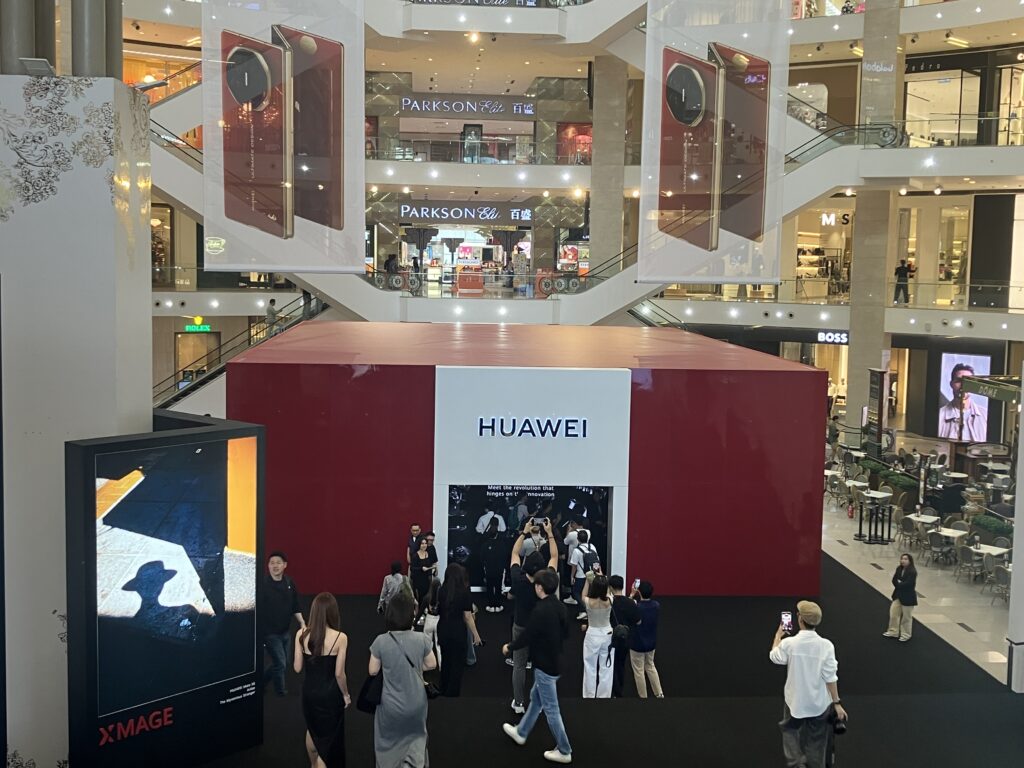
———
Related articles:
- BYD Is Going for Global EV Leadership (1 of 2) (Tech Strategy – Daily Article)
- A Breakdown of the Verisign Business Model (2 of 2) (Tech Strategy – Daily Article)
- 3 Factors Will Determine the Future of Verisign Inc. (Tech Strategy – Podcast 191)
- A Strategy Breakdown of Arm Holdings (1 of 3) (Tech Strategy – Daily Article)
From the Concept Library, concepts for this article are:
- Innovation
- SMILE: Sustained Innovation
From the Company Library, companies for this article are:
- Huawei: Devices Group and HarmonyOS
- Apple
——–
I am a consultant and keynote speaker on how to accelerate growth with improving customer experiences (CX) and digital moats.
I am a partner at TechMoat Consulting, a consulting firm specialized in how to increase growth with improved customer experiences (CX), personalization and other types of customer value. Get in touch here.
I am also author of the Moats and Marathons book series, a framework for building and measuring competitive advantages in digital businesses.
This content (articles, podcasts, website info) is not investment, legal or tax advice. The information and opinions from me and any guests may be incorrect. The numbers and information may be wrong. The views expressed may no longer be relevant or accurate. This is not investment advice. Investing is risky. Do your own research.
